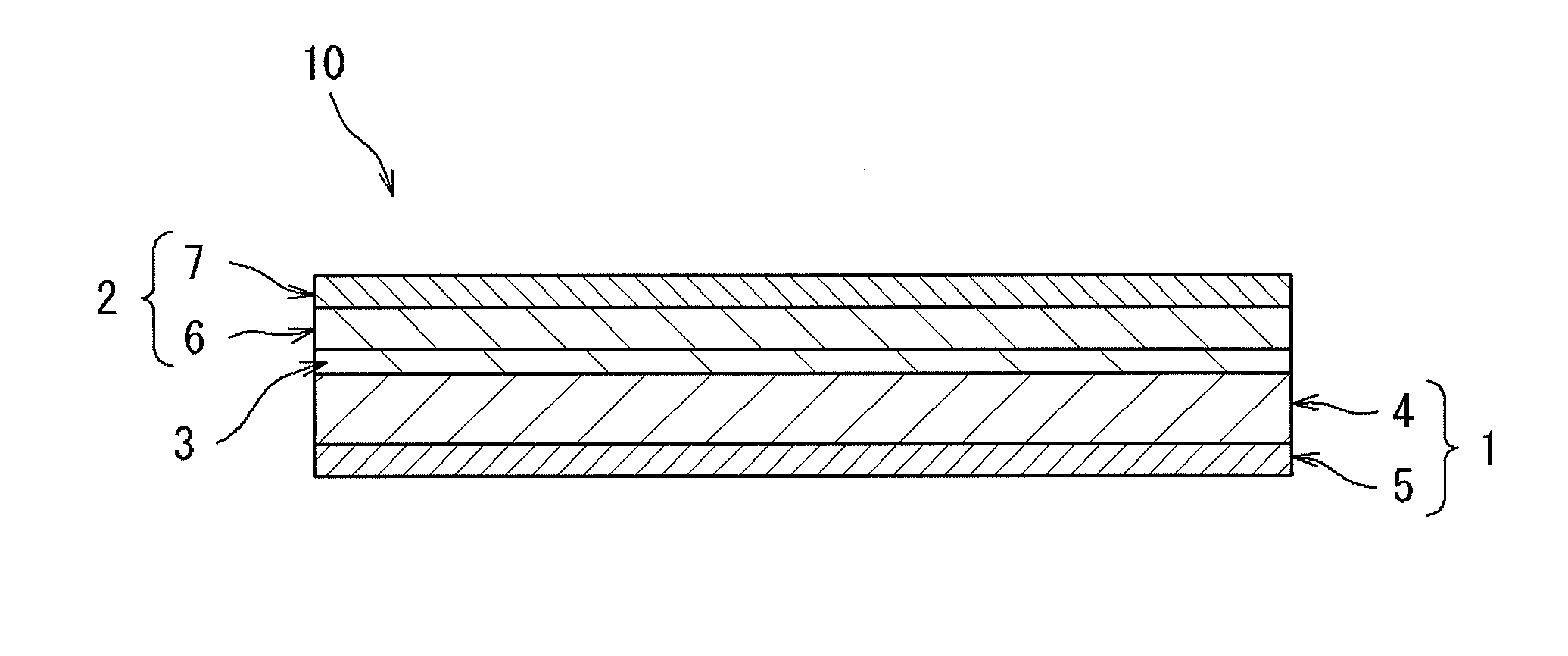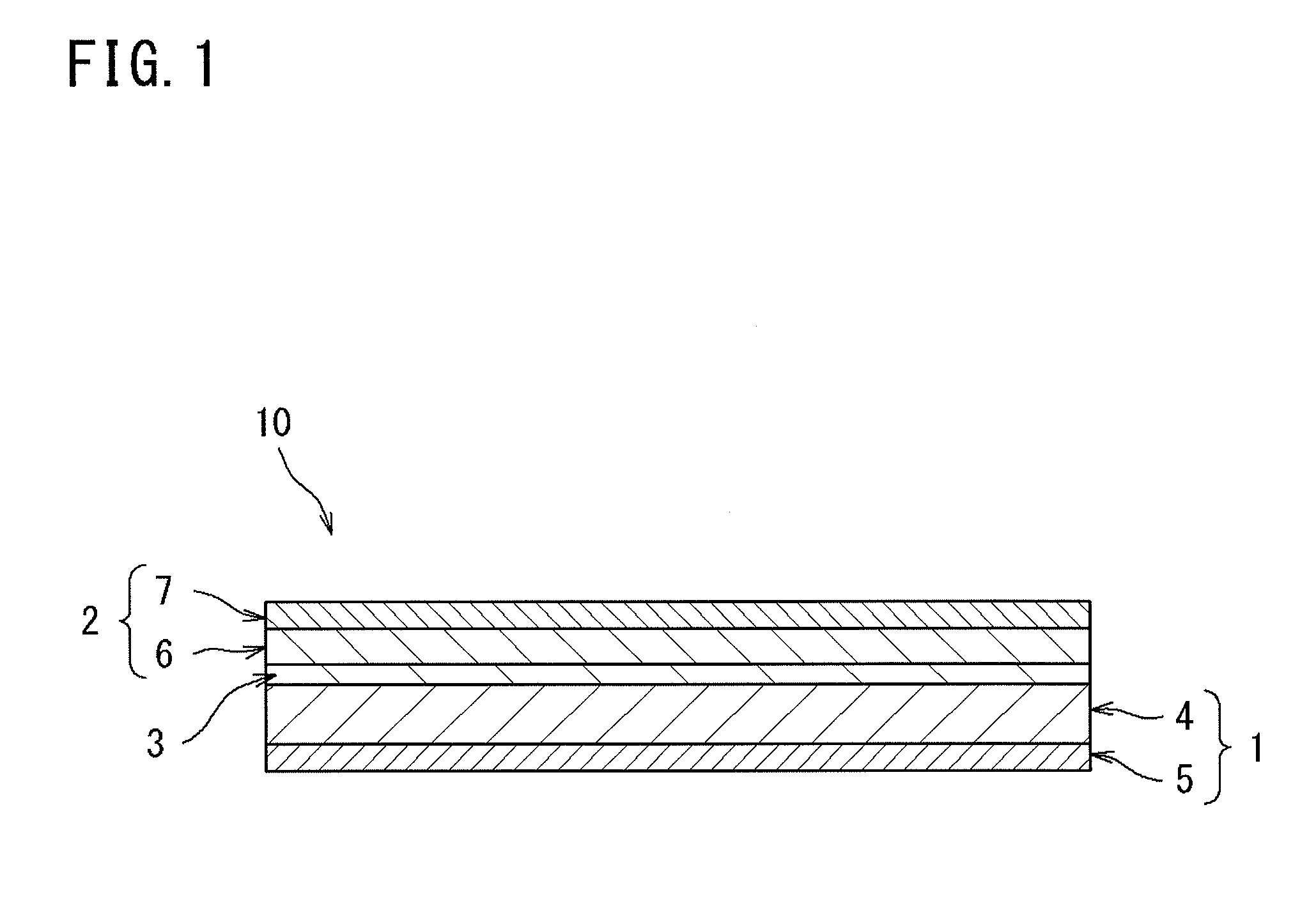Lithium secondary battery
a secondary battery and lithium battery technology, applied in the field of lithium secondary batteries, can solve the problems of easy short circuit of internal batteries, increase in impedance, and flammable liquids in the organic electrolytic solution, and achieve the effect of improving cycle characteristics, no risk of short circuit, and high power
- Summary
- Abstract
- Description
- Claims
- Application Information
AI Technical Summary
Benefits of technology
Problems solved by technology
Method used
Image
Examples
production example 1
Production of Aluminum Porous Body 1
[0112](Formation of Conductive Layer)
[0113]A polyurethane foam (porosity: 95%, thickness: 1 mm, number of pores per inch (pore diameter 847 μm): 30 pores) was used as a resin base material. An aluminum film was formed on the surface of the polyurethane foam by a sputtering method so as to have a weight per unit area of 10 g / m2 to form a conductive layer.
[0114](Molten Salt Plating)
[0115]The polyurethane foam having a conductive layer formed on the surface thereof was used as a workpiece. After the workpiece was loaded in a jig having an electricity supply function, the jig was placed in a glove box which was kept in an argon atmosphere and a low moisture condition (dew point: −30° C. or lower), and then immersed in a molten salt aluminum plating bath (composition: 33 mol % of 1-ethyl-3-methylimidazolium chloride (EMIC) and 67 mol % of AlCl3) at a temperature of 40° C. The jig holding the workpiece was connected to the cathode of a rectifier. An alu...
production example 2
Production of Aluminum Porous Body 2
[0120]An “aluminum porous body 2” was obtained by performing the same operations as in Production Example 1 except for heat-treating a pre-annealing aluminum porous body at 200° C. for 30 minutes in place of heat-treating the porous body at 345° C. for 1.5 hours. The hardness of the “aluminum porous body 2” was 1.12 GPa.
production example 3
Production of Copper Porous Body 1
[0121](Formation of Conductive Layer)
[0122]A polyurethane foam similar to that used in Production Example 1 was used as a resin base material. A copper film was formed on the surface of the polyurethane foam by a sputtering method so as to have a weight per unit area of 10 g / m2 to form a conductive layer.
[0123](Electroplating)
[0124]Next, the polyurethane foam having the conductive layer formed thereon was immersed in a copper sulfate plating bath to perform electroplating, thereby giving a “copper-resin composite porous body 1” in which a copper plating layer (copper weight per unit area: 400 g / m2) was formed on the surface of the polyurethane foam was obtained.
[0125](Removal of Polyurethane Foam)
[0126]The “copper-resin composite porous body 1” was heat-treated thereby burning to remove the polyurethane foam. Thereafter, the resulting product was reduced by heating in a reducing atmosphere to give a “pre-annealing copper porous body 1”. The hardness...
PUM
| Property | Measurement | Unit |
|---|---|---|
| temperature | aaaaa | aaaaa |
| temperature | aaaaa | aaaaa |
| porosity | aaaaa | aaaaa |
Abstract
Description
Claims
Application Information
 Login to View More
Login to View More - R&D
- Intellectual Property
- Life Sciences
- Materials
- Tech Scout
- Unparalleled Data Quality
- Higher Quality Content
- 60% Fewer Hallucinations
Browse by: Latest US Patents, China's latest patents, Technical Efficacy Thesaurus, Application Domain, Technology Topic, Popular Technical Reports.
© 2025 PatSnap. All rights reserved.Legal|Privacy policy|Modern Slavery Act Transparency Statement|Sitemap|About US| Contact US: help@patsnap.com


